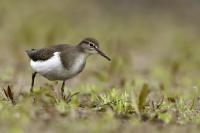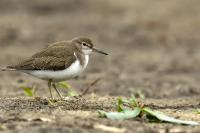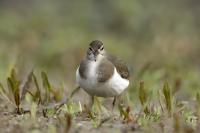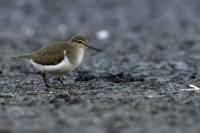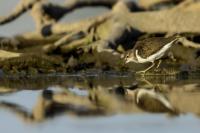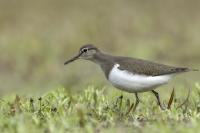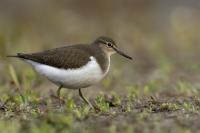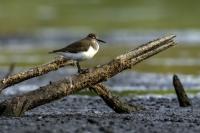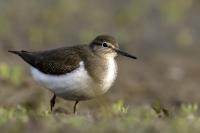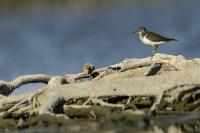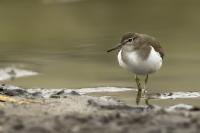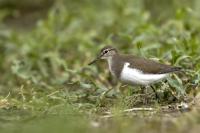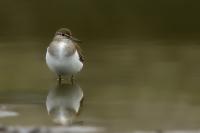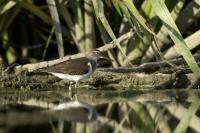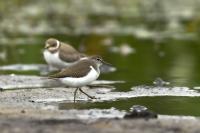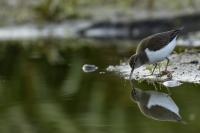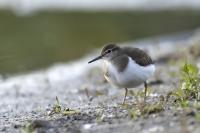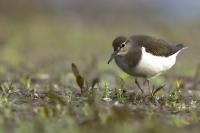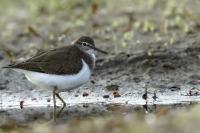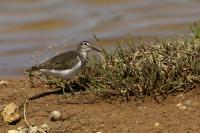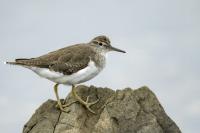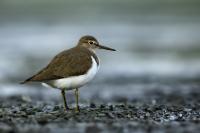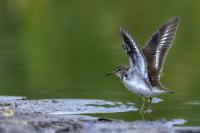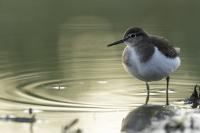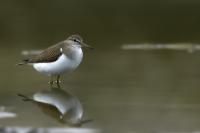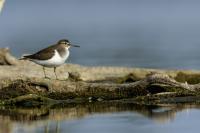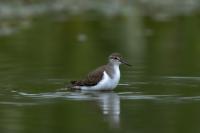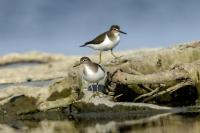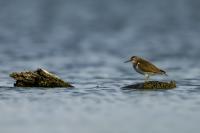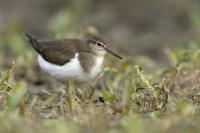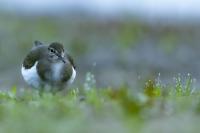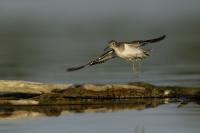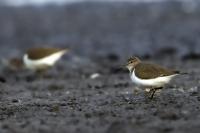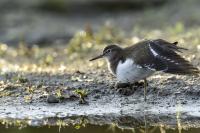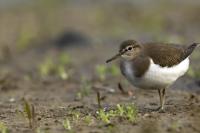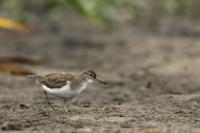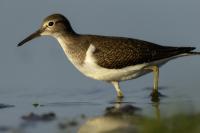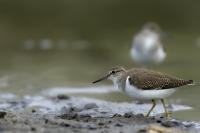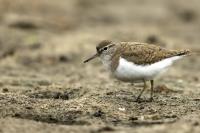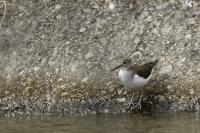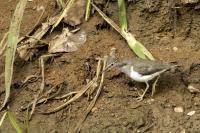I won’t tell you a lot about this bird, its habits or its occurrence, as I haven’t had an opportunity to observe it. The pictures performed are the only photos of this species that I have taken, and they are rather documentary. It has a wingspan of about 30 cm, and weight of 30 g. I hope that the quality of this gallery and my knowledge of these birds will improve with time.
Last minute news - 04/2014
Two years have passed since I last met this bird. The photos I took then began the gallery of this species on my website. As often happens, beginnings are difficult. The gallery of just one shot has changed and developed. During my trip in June I managed to expand the galleries featuring the Common Shelduck, the White Wagtail, and the Sandwich Tern. The trip also resulted in creating new galleries showing the Lesser Whitethroat, the Northen Wheatear and the Eurasian Wigeon. The Common Sandpipers I could spot seating on the breakwaters in Jastarnia and in Hell. They didn’t let me come closer than 20 or 30 metres. After taking a few photos, I tried approaching them more closely. This is how the gallery shown here was made. Because the gallery has been rather modest so far, I am really happy about embellishing it with more photos. The interesting thing is that whenever Swans and White Wagtails appeared in the vicinity, the Common Sandpiper were less apprehensive and I could take better shots. The changes to the gallery are evident, although the new pictures are from perfect.
Last minute news – 05/2014
After some two years, the weekly changes that happen to this gallery transform it beyond recognition. I returned to this place after two years and the Common Sandpipers are going very well and even better or, maybe, I learnt to observe them more carefully. Once, I succeeded in taking one contact photo that started the gallery. Now I was successful to take a dynamic photo, my favourite kind, that shows the bird flying. I counted 8 birds and I had had a shelter at my disposal, the changes would have been more dramatic. I would have even been able to record their voice of their song they produced at the time of their taking off. Their song is a delicate cheep.
Last minute news – 08/2014
Radical changes have been made also in this gallery (like in case of the Sedge Warbler), and so the sandpiper goes to the news. The fourth encounter with the common sandpiper was definitely the closest one. Sometimes sandpipers came to a distance of less than 5 meters. So many interesting pictures were taken that it was enough for the gallery to be rebuilt. Too bad I did not manage to record sound but it was not so easy as sandpipers were heard very rarely. They gave voice when flying away or in there.
Last minute news 08/2014
No doubt in 2014 the gallery of the common sandpiper underwent a total metamorphosis. From the symbolic two-dimensional archive represented by two photos, it changed into a full-dimensional gallery. In other words, a gallery which shows the bird in its natural habitat, presents its natural behavior. A one to which I gladly come back. The third encounter with the common sandpiper in 2014 and I managed to record its sound. Unfortunately the conditions were a little bit too urbanistic, so the background noise might still be audible, but the sandpipers would sit down so close that I did not have problems with recording. That's how the first recordings were created. Who knows, if I was successful with the photos, I may be able to improve the sound one day too.
Last minute news 04/2015-Malta
I uploaded a few photos of the common sandpiper taken against the background of the “reddish” Maltese soil in quite an interesting place, for the Maltese landscape (see the description for the wood warbler). The sandpiper was so tired that it didn’t pay much attention to our presence. Let’s hope that it managed to leave this inhospitable for birds island safely. A referendum which took place on the island, while I was there, failed. Maltese people will be allowed to shoot birds during migration flights, and among their greatest trophies there are predators and other rare birds.
Last minute news – 07/2015
When I was waiting on the pectroral sandpiper created several pictures of common sandpiper. The gallery was rebuilt.
Last minute news 09/2021
Unexpectedly, after 6 years, the gallery was rebuilt. Common Sandpiper, one could say, was on duty in front of the shelter. It was with us all the time, for many hours. Even more interesting shots would be created, but the tripod was set a bit higher, because a bittern was supposed to appear in front of us….
Last minute news 11/2022- Zambia
Last minute news 11/2023- India

